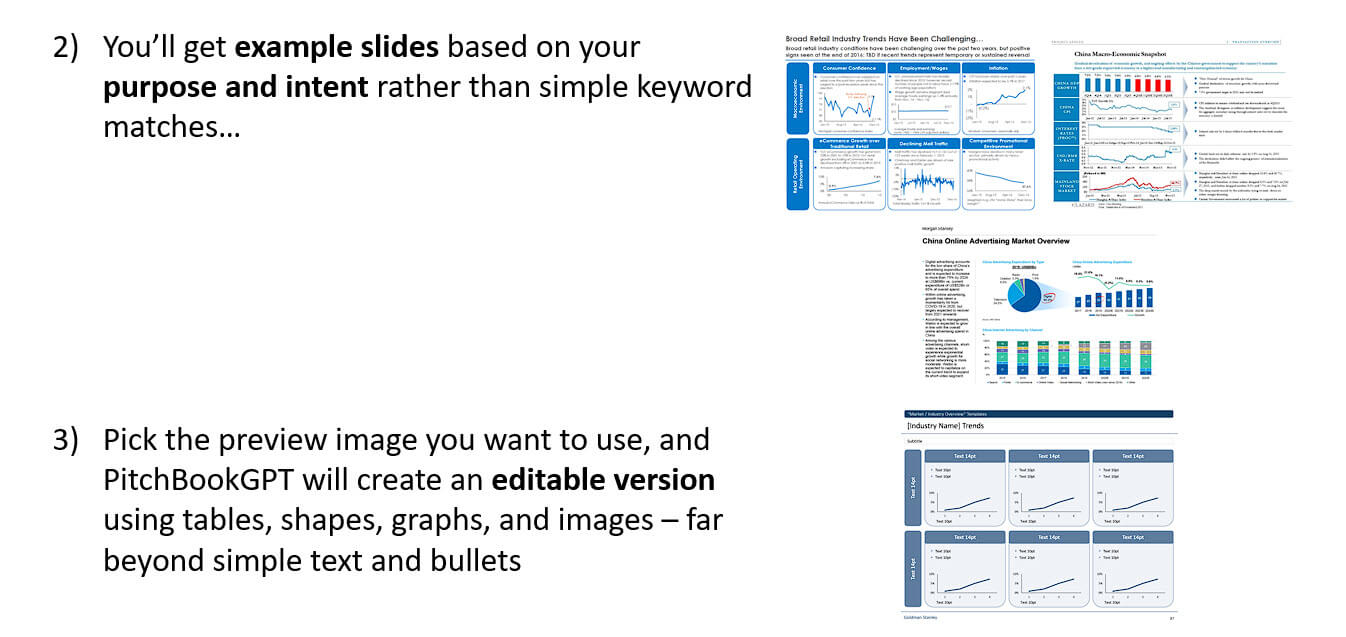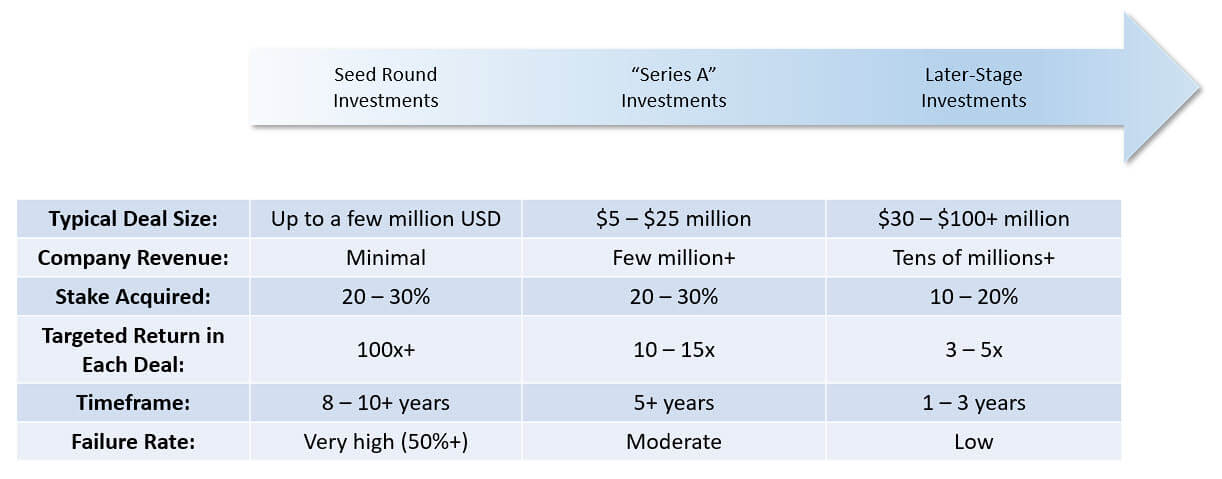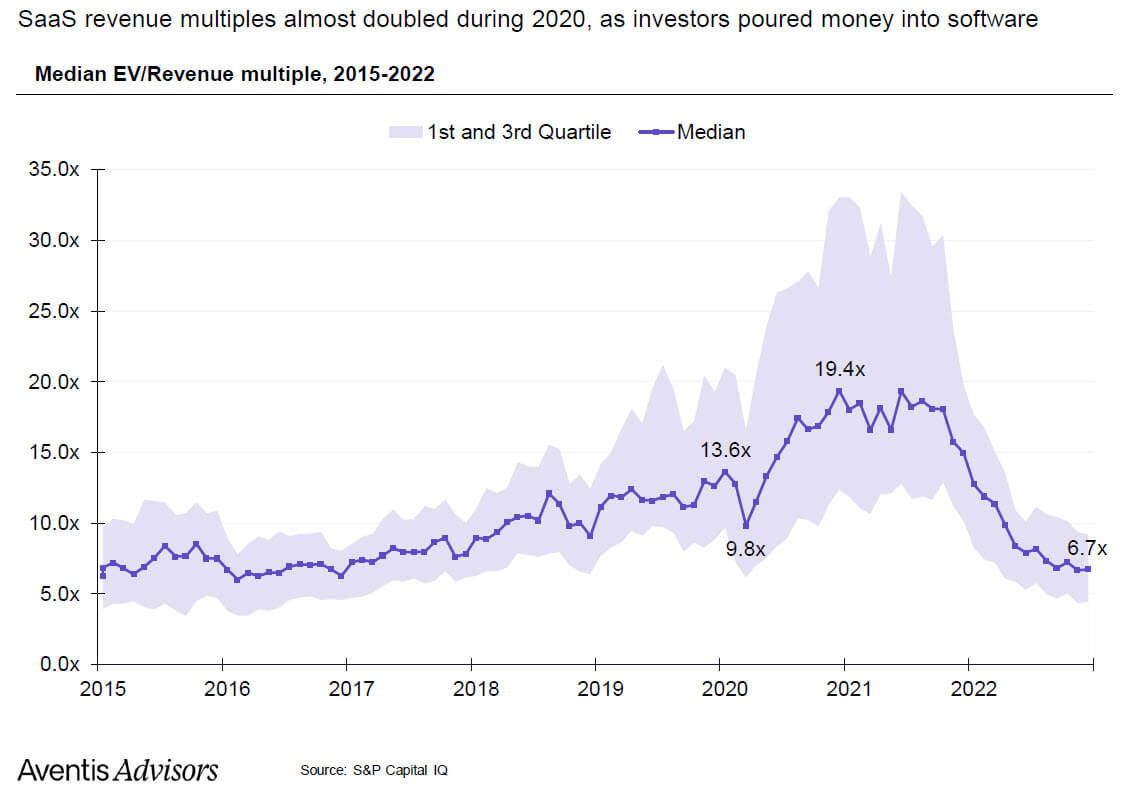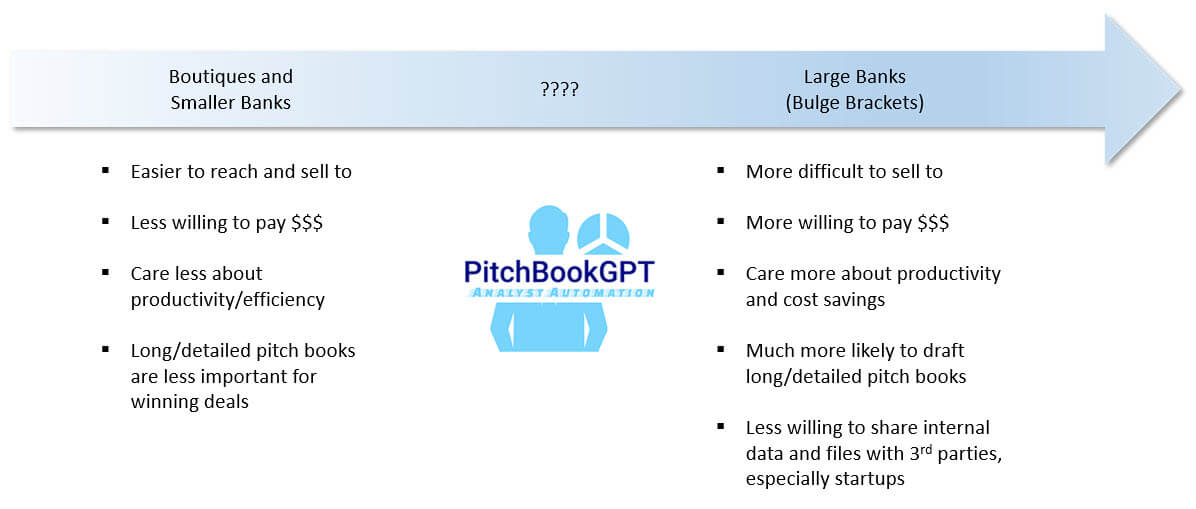The Venture Capital Case Study: What to Expect and How to Survive

There’s plenty of information online about case studies in finance interviews (IB, PE, etc.), but the venture capital case study remains a bit mysterious.
Depending on your source, a VC case study might consist of a “cap table” exercise where you calculate the company’s ownership over many investment rounds and the proceeds to each group upon exit…
…but it could also be a qualitative discussion of a market, an evaluation of a specific startup, or even a simple 3-statement model.
But if you’re interviewing at an early-stage VC fund (i.e., Seed and Series A investments), the most common type is the “Evaluate a startup and recommend investing or not investing” one.
The VC firm might give you a short investment memo or slide deck for the company, ask you to read it, and then say “yes” or “no” based on your analysis and interpretation.
We’ll go through a short example for a fictional startup called PitchBookGPT, which comes directly from our new Venture Capital & Growth Equity Modeling course.
This is a summary version, but it should be enough to give you some practice:
The Video Tutorial and the Files
If you prefer to watch or listen to this tutorial, you can get the 14-minute video walkthrough below:
If you prefer to read, you can continue with this article.
You can get the files, including the company’s pitch deck, here:
- PitchBookGPT – Seed Round Pitch Deck (PDF)
- Venture Capital Case Study Prompt (PDF)
- Venture Capital Case Study Solutions and Investment Recommendation (PDF)
- Case Study Walkthrough and Explanation – Slides (PDF)
- SaaS Valuation Multiples and Historical Data (PDF)
Video Table of Contents:
- 0:00: Introduction
- 1:58: Part 1: What to Expect in VC Case Studies
- 3:10: Part 2: What Do VCs Want in Early-Stage Investments?
- 4:51: Part 3: “The Numbers” for PitchBookGPT
- 8:16: Part 4: The Market, Product, and Team
- 11:45: Part 5: Recommendation and Counter-Factual
- 13:04: Recap and Summary
This Venture Capital Case Study Example: PitchBookGPT
In short, this startup is riding the AI hype train and plans to offer a subscription service that will automate parts of the pitch book creation process at investment banks.
It won’t replace Analysts or Associates because it can’t create entire presentations with all the correct details.
But it speeds up the process by generating slide templates based on your queries, presentation data, and free examples on the sec.gov site.
For example, if you type in “SPAC vs. IPO” or “Market overview slide with monetary and fiscal factors,” the software will generate sample slide images, and you can click the one you want to get an editable PowerPoint version:

The “artificial intelligence” part comes in because simple keyword searches do not work well when searching for specific slides; a slide’s purpose often differs from its text.
Also, machine learning could work well for a problem such as converting slide images into editable PowerPoint templates.
This is much trickier than it sounds for moderately complex slides, and a rules-based system is less efficient than using huge data sets for the image-to-slide translation.
This startup claims that its service can boost Analyst productivity by 30% and generate millions in extra fees for the average bank, and it plans to sell it to boutique banks for $2,000 per month.
They want a $2 million seed investment at a $20 million post-money valuation, meaning that we (the VCs) will own 10% if we invest.
So, should we do the deal?
What Do Venture Capitalists Look for in an Early-Stage Investment?
To answer this question, you need to think about what early-stage VCs look for in deals.
Most early-stage companies do not have revenue, but they do have markets and teams.
Since early-stage investing is so risky, VCs seek opportunities with the potential for very high cash-on-cash multiples, such as 10x in Series A rounds or 100x in Seed rounds.
To be clear, these are the targeted multiples.
Most startups fail, and even the ones that succeed do not come close to a 100x multiple in most cases.
Since this failure rate is so high, early-stage VCs need to aim high by finding companies with the potential to serve huge markets.
Here’s a summary of the different stages:

Since the asking valuation is $20 million, we can reframe this case study as:
“Could this company potentially reach 100x that valuation, or $2 billion? If not, what about something like 10 – 20x, for a $200 – $400 million valuation?”
You can answer this question by doing some quick math and qualitatively evaluating the market, product, and team.
Venture Capital Case Study, Part 1: The Numbers
In its slide deck, this company claims that there are ~4,000 boutique banks worldwide with 1 – 20 employees and that these banks alone can support a $100 million market size (since 4,000 * $2,000 / month * 12 months = $96 million).
They plan to target these smaller and mid-sized banks because they’re easier to reach and they have fewer resources for pitch book creation.
But this company makes a common mistake with this claim: it assumes it will capture 100% of this market.
That never happens in real life, even in a narrow niche like this one – because there are competitors and many firms that don’t need the product.
In large markets (tens or hundreds of billions of dollars), capturing even a tiny percentage might be a good result.
In a narrower market like this one, something like 10 – 20% might be plausible if the company executes well.
That means a more realistic revenue estimate is $10 – $20 million.
Startup / SaaS Valuation
Subscription software companies are usually valued based on a multiple of annual recurring revenue (ARR), and this multiple is typically between 5x and 10x for public companies:

If we apply these multiples to the company’s revenue estimates, we get a valuation range of $50 million (5x * $10 million) to $200 million (10x * $20 million).
This is a great result for the company, but it’s far below what most seed-stage VCs want.
A $50 million exit value would be a 2.5x multiple, while a $200 million exit value would be a 10.0x multiple.
And these numbers represent the potential outcomes and assume that everything goes well.
Also, these numbers do not account for the dilution in future funding rounds.
This 10% ownership will likely fall to 7%, 5%, or even 3% as the startup raises money in the Series A, B, and C rounds, which means even lower returns multiples.
You might say, “OK, but couldn’t this company’s revenue go much higher? They should charge per user, not per firm, for this service.”
And that leads us to the next point about the qualitative evaluation of the market, product, and team.
Venture Capital Case Study, Part 2: The Market, Product, and Team
I wouldn’t say this company’s product is “terrible” – I’ve seen much worse startup ideas.
But it faces a “no man’s land problem” because the ideal customers differ from the reachable customers.
Boutique banks tend to be much more cost-conscious than large firms and don’t necessarily want to add a $2,000 monthly expense for multiple employees.
If a boutique bank needed this service for 5 Analysts, $2,000 per user per month would mean $120K per year, which is about the cost of hiring a full-time Analyst.
Many small banks would look at this and say, “OK, it speeds up presentations… but for that price, we could hire another Analyst and get client support, Excel work, and more.”
Also, small banks depend far less on long and detailed pitch books than large banks.
Most new deals come from longstanding relationships, not inbound inquiries or bake-offs / beauty pageants.
PitchBookGPT could target large banks (the bulge brackets) instead, as they are more willing to pay for training and productivity tools.
This service would be more useful for large firms because they tend to produce the 100+ slide pitch books where automation tools could save time.
However, it’s also much more difficult to close deals in this market, and compliance concerns mean these banks are less willing to share their data with external parties.
Could you imagine Goldman Sachs or Morgan Stanley uploading all their pitch books and slides to a VC-funded startup that may not even exist in a year?
Here’s my summary of the product/market fit problem:

Other Points in This Venture Capital Case Study
We don’t have time to analyze the team or the expected use of funds for this $2 million investment, but you would consider both in real life.
In short, they’re “fine but not amazing” – some of the budget numbers seem a bit too low (e.g., for the engineers), while others are on the high side (sales & marketing), but nothing seems completely crazy.
Similarly, the team (all fake names and bios) has relevant experience but looks a bit “junior,” so we’re neutral on them.
Our Final Decision
In short, we’d say no to this deal because we think a 100x multiple in any reasonable time frame – such as 5 or even 10 years – is implausible.
A 5 – 10x multiple might be feasible, but that’s not a great “stretch goal” for a seed-stage deal.
To reach a $1 – 2 billion valuation, the company would need hundreds of millions in annual revenue, and we don’t think that’s realistic for its business model and market.
The company could develop a different product or offer higher-end services to larger firms, but it doesn’t even have a “Version 1.0” yet, so that would be putting the cart before the horse.
You can view the full recommendation here.
What Would Change Our Mind?
If a few factors were different, we might be more inclined to recommend this deal:
- Per-Seat Pricing – Maybe they can’t charge $2,000 / user / month, but even something like $1,000 / user / month could increase potential revenue at many firms.
- Lower Asking Price – While a $2 million seed investment at a $20 million post-money valuation is not unheard of, it is aggressive. If the asking valuation were only $5 – 10 million, the deal math would be more feasible (maybe not for a 100x multiple, but something like 20 – 30x).
- Higher-End Product – For example, banks might be willing to pay more if this product could replace employees rather than just boost their productivity. But that would require far more capital to develop and might require technology that doesn’t exist.
The Venture Capital Case Study: Final Thoughts
In short, unlike many startups, this PitchBookGPT idea isn’t necessarily “bad.”
There are proven markets for productivity tools, slide templates, and reference models in both PowerPoint and Excel.
But the problem is that this isn’t a great early-stage VC idea – at least not for the deal terms the company wants.
That’s not great news for this fictional company, but it is reassuring if you’re a junior banker worried about getting replaced by AI anytime soon.
It probably won’t happen – and in the near term, these new tools might even improve your life.
Free Exclusive Report: 57-page guide with the action plan you need to break into investment banking - how to tell your story, network, craft a winning resume, and dominate your interviews
Comments
Read below or Add a comment




This was a good read!
I noticed that you have a typo under the “slide dick”, right after the header of part 1 case study – or was that meant to be intentional ?
Thanks for pointing that out (fixed now). Nope, not intentional, somehow both spelling and grammar check missed it, and so did I (one issue when you stare at these documents all day…).